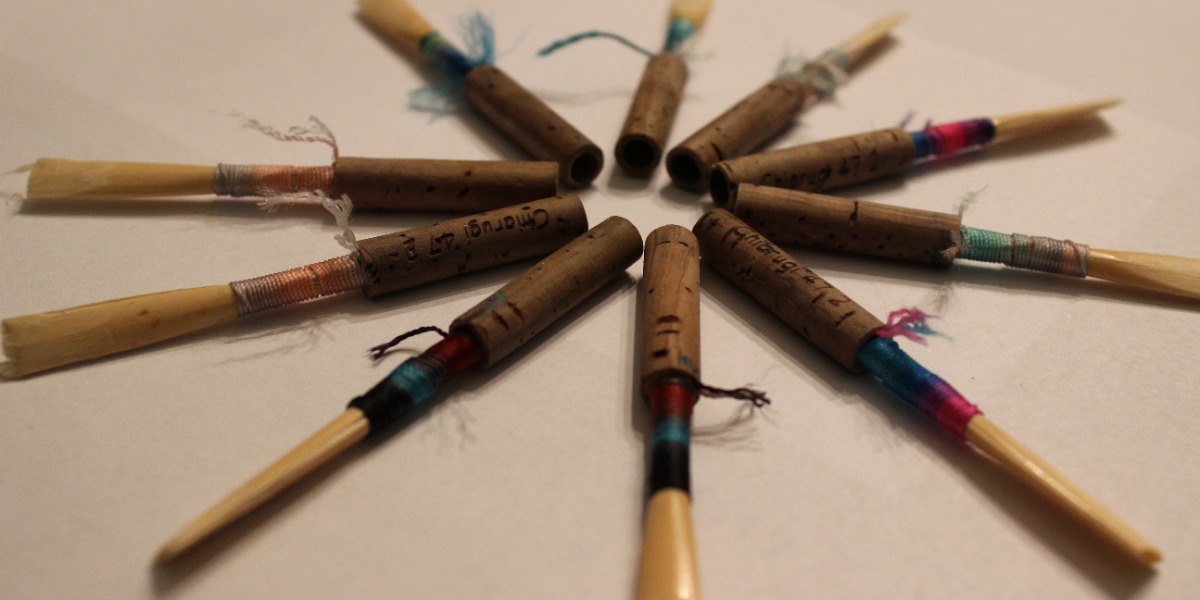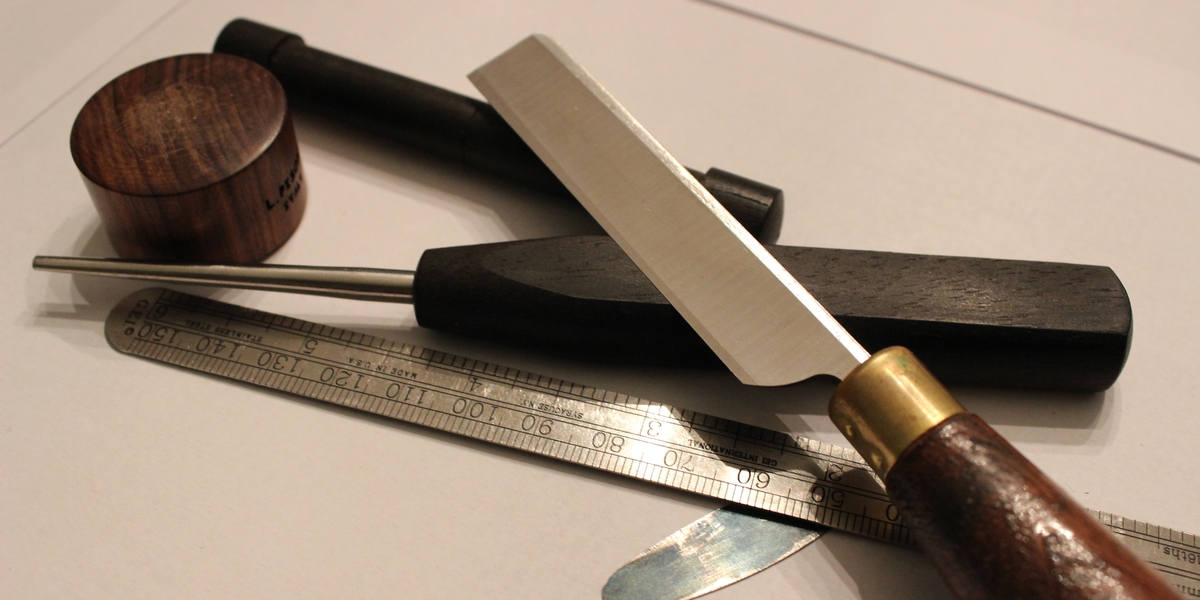In this article, we'll compare oboe vs. clarinet, two awesome instruments of the woodwind family. The woodwind family gets their name, because they used to all be made out of wood. Now they are made out of metal, plastic, wood, or some combination of the materials.
The oboe and clarinet are no different. In fact, the two instruments look very similar, commonly with the same jet black appearance. However, there are many differences between the two instruments even though they are in the same woodwind family.
As an oboist, I am often asked if the instrument I am holding is a clarinet. It is the more well known of the two instruments and is something that most people would be familiar with.
You may be looking at this article because you or your student is trying to decide between the oboe and clarinet, or because you just simply want to know more about them.
This article aims to make you more familiar with the similarities and differences between the oboe and clarinet.
History of Instruments
The invention of the clarinet in around 1700 is credited to the Nuremberg instrument maker Johann Christian Denner. Unlike its predecessor, the chalumeau, this clarinet was longer, had a bell, wider bore, and had eight holes and 2 keys.
Later, Hyacinthe Klose suggested to the instrument maker Louis Buffet that a clarinet could be made using this so-called Boehm system. They produced a clarinet with seventeen keys and six rings that controlled twenty-four tone holes, which is essentially the instrument that is used today.
The oboe originates from the antiquity era, known as the zurna with the shawm also existing in overlapping time periods. The actual oboe, known as hautbois in French, was most likely developed in the court of Louis XIV in 1657.
Most of the transformation of the oboe happened in the 1800s, but the final form that is used today, the Conservatory model, was created in 1906 by François Lorée and George Gillet. By this point, the use of finger plates instead of open rings was employed.
Size/Appearance
Some quick facts on the makeup of the two instruments:
A clarinet has a cylindrical bore, whereas the oboe has a conical bore.
The clarinet is 27.5 inches long, whereas the oboe is 26 inches.
A clarinet has a mouthpiece and a barrel, whereas the oboe reed gets placed directly into the instrument.
Sound and Range
The clarinet, a treble clef instrument, is most often found in the key of Bb in the modern band and orchestra world, however clarinets in the key of A are also used. A clarinet has the most homogeneous range of any of the woodwinds. At any point in the range, a good clarinetist can play any dynamic.
The timbre can be described as deep and rich in the lowest register (the chalumeau), pure in the middle register (the clarion), and more piercing and bright in the highest register (the altissimo). All that being said, the overall sound of a clarinet is very mellow.
The clarinet has the widest range in the woodwind family, spanning over three octaves. Unlike the oboe, no vibrato is used while playing clarinet, unless explicitly asked for in special circumstances. Here is what a clarinet sounds like:
The oboe, another treble clef instrument, is always found in the key of C. The dynamic range is not as large as the clarinet, especially in the extremes of ranges.
The oboe’s timbre can be described as colorful, nasally, and singing. It is known for its ability to pierce through the sound of an entire ensemble. It is an expressive instrument, with a dark lower octave, and piercing upper octave.
The range of an oboe spans almost three whole octaves. Here is an example of what an oboe sounds like:
Single vs. Double Reed
A clarinet uses a single reed that is placed against a set mouthpiece.
An oboe uses a double reed that consists of two pieces of cane that vibrate against one another.
Reed Strength/Boxes vs. Single
Another difference between the oboe and clarinet is how the reeds are marketed/purchased. Single reeds, such as clarinet reeds, come in boxes of about 10 reeds.
They have different strengths, such as 2 or 2.5. The difference in strengths matters for how each individual player plays: the strength of their embouchure, how much air they put through their instrument, etc.
An oboe reed is sold individually. There are many different types of reeds, check out my article about oboe reeds to read more about them.
As the strengths of reeds for clarinets, there is a way to mark that for machine-made oboe reeds. For an oboe reed, they sell them as medium-soft, medium, or medium-hard. These ratings of strength are similar to single reeds - they are merely used to help individual players choose the right reed for them.
Ease of Learning
The oboe is notoriously one of the hardest instruments to learn. It takes a lot of diligent practice and resilience. It is also highly recommended that you find a private instructor if you choose to learn this instrument. An expert on the instrument will be able to guide beginners through the challenges that come with playing the oboe.
That being said, the clarinet is not an easy choice for an instrument to learn. Like any instrument, the clarinet still requires diligent practice to master the instrument.
The hardest aspect of learning the clarinet is the embouchure, and strengthening it so that it can be firm enough to facilitate a good tone. For students of small stature, they may have trouble covering the tone holes all the way.
Some of the challenges that come with the oboe are the embouchure and tuning. The embouchure is not a natural thing to make or strengthen, and it takes time to solidify.
The tuning is extremely hard, because you can’t just pull out or push anything in. The oboe reed is meant to be placed all of the way in the instrument. All of the tuning on an oboe is done by loosening or tightening the embouchure and adjusting airflow. The student must have a good ear, because they will be constantly tuning.
Availability of Experts
Experts of instruments are important for the developing player. These experts are the people who teach lessons and share their knowledge with those who don’t have the same amount of experience on the instrument.
I mentioned above that the clarinet is more well known than the oboe. This is because there are more clarinet players out there. If you look at a band, there are often 8-12 clarinetists in one band, whereas there are only 2-3 oboists.
You will be able to more easily find experts on the clarinet for this very reason. There are just more people that play this instrument. Experts on the oboe are much harder to find, and in order to take lessons, you might need to drive a longer distance to work with an expert.
Maintenance
Along the same vein, maintenance for the oboe can get a little bit more complicated. The instrument is so delicate and precise that it takes someone who knows a lot about the instrument to adjust it correctly.
Similar to experts that teach oboe, experts available to maintain oboes are limited. I would recommend taking your oboe into a specialist, because they will know exactly what to do with the instrument.
Oboes are a relatively expensive instrument, so I wouldn’t want to send it to someone that doesn’t know what they are doing. If the instrument isn’t taken care of properly, some pretty expensive bills can result.
I have had some bad experiences with local music shops adjusting my oboe, but I would definitely trust them with just about any other instrument!
A clarinet, for example, is something that can definitely be fixed by your local music store. You might get to a point where you would rather bring your instrument into a specialist.
Role in Ensemble
The clarinet’s dynamic range allows for larger groups of the instrument to support different settings. Think about how the strings in the orchestra set the stage for quieter parts in music and a soloistic section to come out. The clarinet is used to set the scene in wind band literature.
Clarinets also allow for some challenging technical playing. The instrument often gets tough upper woodwind lines that are meant to add flourish and sparkle to pieces.
The clarinet gets plenty of opportunity to shine. The vast 3+ octave range provides composers with many different ways to utilize the instrument. Its mellow sound blends well with other instruments, which can add interesting texture to a piece.
The oboe’s colorful, expressive tone makes it a very popular choice for soloistic sections. It is extremely distinct in its tone, and can be heard easily. The oboe is known for its use in many lyrical sections of literature.
The oboe is also used in the challenging upper woodwind lines like the clarinet, but its range and dynamic offerings can limit its use.
Now that you know a little bit more about the similarities and differences between the oboe and clarinet, you’ll be able to distinguish between the two at the next band or orchestra concert!




